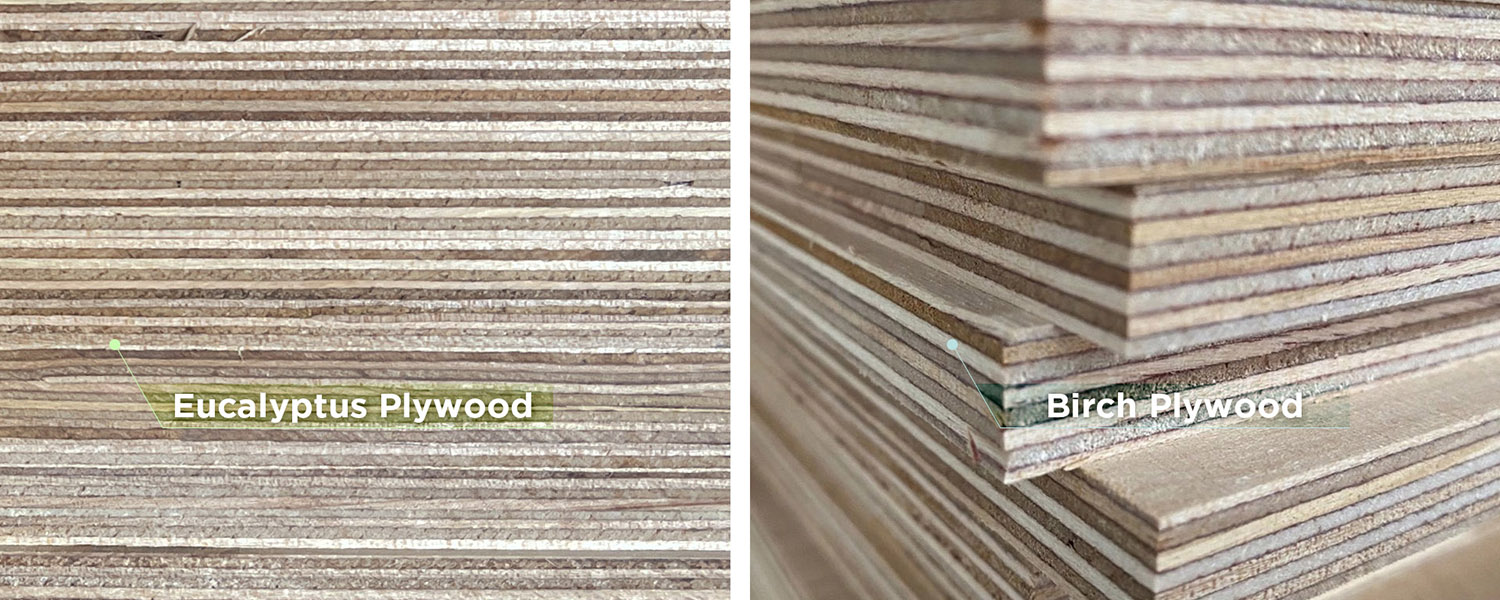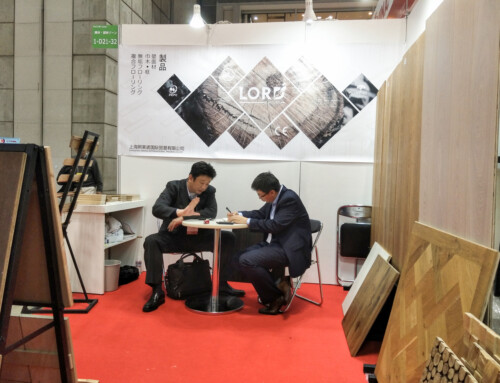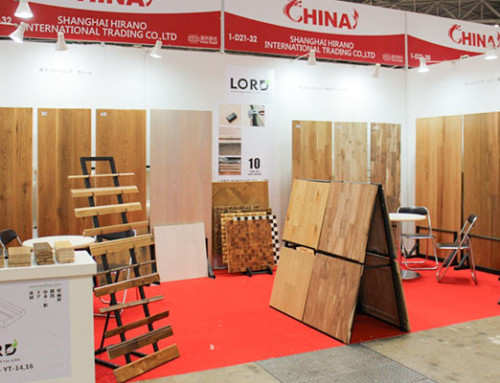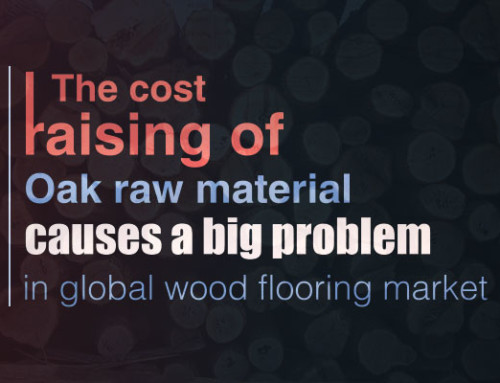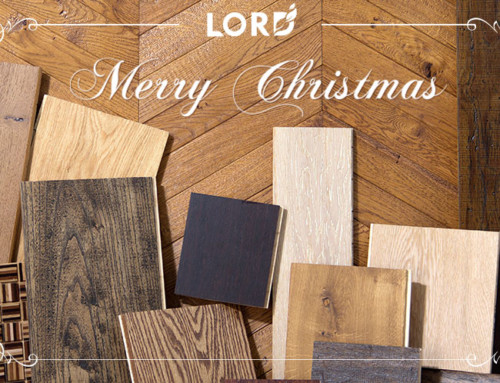Eucalyptus Plywood vs. Birch Plywood
Eucalyptus and birch are two unique types of hardwood, each with its distinct properties. Eucalyptus is gaining attention for its sustainability and durability,
while birch is celebrated for its hardness and versatility. Despite eucalyptus plywood being rare and information about it limited,
we can explore the characteristics of solid eucalyptus and birch lumber, their uses, and the lesser-known aspects of eucalyptus plywood.
Eucalyptus Wood: A Sustainable Marvel
Birch Wood: Northern Hardwood Excellence
Birch is commonly found in Northern regions such as North America and Northern Europe, with a Janka hardness rating of 1,470 pounds. Known for its hardness and slight flexibility, birch is ideal for various applications. Its coarse texture and susceptibility to moisture and pests differentiate it from eucalyptus. Birch wood ranges in color from light yellowish to golden-brown and is widely used in furniture, cabinetry, and structural projects.
Eucalyptus vs. Birch Plywood: Navigating the Differences
When comparing eucalyptus and birch plywood, the rarity of eucalyptus plywood makes the analysis challenging.
Limited information necessitates educated guesses based on the properties of solid eucalyptus lumber.
Key differences between eucalyptus and birch plywood include
Eucalyptus vs. Birch Plywood: Comparative Analysis
Moisture Resistance in Plywood: Eucalyptus vs. Birch
Eucalyptus Plywood: Close-to-Waterproof Nature
Eucalyptus plywood is distinguished by its exceptional ability to withstand moisture, almost to the point of being waterproof. This is largely due to the natural oils in eucalyptus wood, which form a protective barrier against moisture. This property makes eucalyptus plywood highly suitable for outdoor applications where it will be exposed to various weather conditions. It is an excellent choice for outdoor furniture and structures that require significant water resistance.
Birch Plywood: Susceptibility to Moisture-Related Issues
On the other hand, birch plywood tends to be more prone to moisture-related problems. While birch wood is appreciated for its strength and versatility, birch plywood can be more vulnerable to moisture effects. The large pores in birch wood can absorb moisture unevenly, potentially causing warping, swelling, or other forms of degradation over time. This susceptibility means birch plywood is less suitable for environments with prolonged moisture exposure, requiring careful consideration of protective measures and environmental conditions.
Pest Resistance in Plywood: Eucalyptus vs. Birch
Eucalyptus Plywood: Density and Oils for Resistance
Eucalyptus plywood exhibits a notable resistance to pests, largely due to its density and the presence of natural oils. The wood’s density, combined with its protective oils, helps deter many pests, making eucalyptus plywood less prone to infestations. In areas where pests are not particularly attracted to eucalyptus, this pest resistance is a significant advantage, especially for outdoor applications.
Birch Plywood: Vulnerability Due to Pore Size and Density
In contrast, birch plywood is more susceptible to pests because of its larger pores and lower density. The larger pores can serve as entry points for pests, such as wood-boring insects. Additionally, the lower density of birch plywood compared to eucalyptus makes it less naturally resistant to certain pests. In regions with a high prevalence of wood-boring insects, birch plywood may require additional protective measures to reduce the risk of infestation.
Appearance and Staining Characteristics in Plywood: Eucalyptus vs. Birch
Eucalyptus Plywood: Pronounced Grain Pattern
Eucalyptus plywood is notable for its pronounced and visually distinctive grain pattern. The grain lines in eucalyptus plywood often feature straight and interlocking patterns, creating a striking and unique look. This pronounced grain adds depth and texture, enhancing the plywood’s aesthetic appeal. Additionally, the reddish-brown color of eucalyptus plywood further highlights its visual charm, making it a popular choice for those who appreciate bold and natural wood grain in their projects.
Birch Plywood: Less Visually Distinctive Grain
In contrast, birch plywood generally has a less visually distinctive grain pattern. The grain in birch plywood is typically light, straight, and occasionally slightly wavy. While birch plywood offers a clean and classic appearance, its grain is not as pronounced as that of eucalyptus plywood. This makes birch plywood a versatile option for projects that require a more subtle or neutral grain pattern. However, this less distinctive grain can pose challenges when staining.
Staining Challenges with Birch Plywood
Birch plywood is known for its staining difficulties. The wood’s pores can absorb stain unevenly, resulting in a blotchy and inconsistent appearance. To achieve a uniform finish on birch plywood, careful staining techniques and the use of pre-stain conditioners are necessary to ensure even absorption.
Ease of Staining and Painting in Plywood: Eucalyptus vs. Birch
Eucalyptus Plywood: Recommended for Furniture with Easy Staining
Eucalyptus plywood is highly regarded for its ease of staining and painting, making it a recommended choice for furniture projects. The wood readily accepts stains, ensuring a smooth and even application. Woodworkers often find that eucalyptus plywood responds well to staining, resulting in a consistent and desirable finish. This ease of staining enhances its popularity in furniture-making, where a uniform and aesthetically pleasing appearance is essential.
Birch Plywood: Challenging to Stain, Prone to Uneven Results
In contrast, birch plywood is known for its staining challenges. The wood’s pores can absorb stain unevenly, resulting in a blotchy and inconsistent appearance. Achieving a smooth and uniform finish on birch plywood requires careful attention to staining techniques. Woodworkers often struggle with managing the stain absorption, and despite their efforts, they may encounter uneven results. This characteristic adds complexity to the staining process of birch plywood.
Birch plywood is known for its staining difficulties. The wood’s pores can absorb stain unevenly, resulting in a blotchy and inconsistent appearance. To achieve a uniform finish on birch plywood, careful staining techniques and the use of pre-stain conditioners are necessary to ensure even absorption.
Strength, Durability, and Flexibility in Plywood: Eucalyptus vs. Birch
Eucalyptus Plywood: Water Resistance and Flexibility Trade-offs
Eucalyptus plywood is renowned for its strength and durability, largely due to its water-resistant properties. The natural oils in eucalyptus help it withstand moisture, making it an excellent choice for outdoor applications. However, this water resistance can come with trade-offs in terms of flexibility. Although eucalyptus plywood is structurally sound, it may not be as flexible as other hardwood options.
Birch Plywood: Hardness and Flexibility Balance
In contrast, birch plywood is valued for its balance of hardness and flexibility. The high Janka hardness rating of birch wood underscores its strength and durability, making it suitable for a variety of applications that require robust material. However, the trade-off is in water resistance. Birch plywood is more prone to moisture-related issues compared to eucalyptus plywood, which can affect its long-term durability, especially in outdoor settings.
Eucalyptus Plywood
As eucalyptus plywood gains popularity, especially for furniture and outdoor use, it becomes a compelling option to explore. Its sustainable nature, water resistance, and distinctive appearance make it a versatile choice for modern woodworking projects.
Birch Plywood
Birch plywood, with its diverse applications in furniture, cabinetry, and structural uses, continues to be a reliable and widely-used material. Its strength, flexibility, and neutral aesthetic contribute to its enduring popularity.
Making Your Choice
When deciding which plywood to use, consider the specific needs and preferences of your project. Whether it’s the bold aesthetic of eucalyptus or the versatile strength of birch, the choice ultimately depends on aligning plywood characteristics with the demands of your woodworking endeavor. Explore, experiment, and make informed decisions to bring your vision to life.

